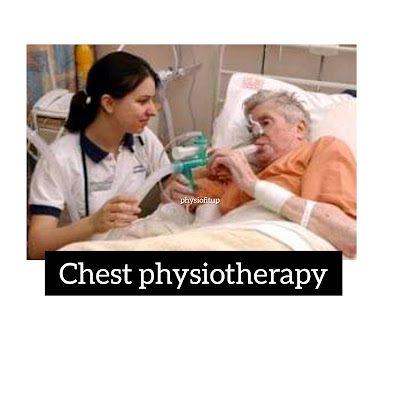What is cervical spondylosis? its Causes, Symptoms, and Treatment protocol
Cervical Spondylosis
Cervical spondylosis is a natural condition by wear and tear of cartilage, ligaments and bones. The common symptoms include neck pain or stiffness of the neck. It can be treated by physiotherapy.
In case of more severe conditions such as herniated disk, bones spurs etc. are treated with injection and surgery
What is cervical spondylosis
Cervical spondylosis is commonly called arthritis of the neck. It is an age-related condition that affects joints or discs in the neck. It occurs in the cervical spine, the seven small vertebrae that into the neck.
It develops wear and tear of cartilage, ligaments and bones, which affects the spinal disc into the neck.
With increasing age, the disk of the cervical spine gradually break down, lose fluid and becomes stiff as a result of degeneration of disk and abnormal growth of bone which can cause narrowing of the neck.
What is the cause of cervical spondylosis
It arises from degenerative changes that occur in the spine with increasing age. It is a normal condition that occurs in everyone.
Possible cause of cervical spondylosis
Bone spurs
These are the overgrowth of the bone. The extra growth of bone can press on the delicate area of the spine such as the spinal cord and nerves which results in pain.
Dehydrated spinal discs
The gel-like fluid is present inside the vertebra can dry out over time. These can cause the spinal vertebra to rub over the other one which is more painful.
Herniated disc
A spinal disc can develop cracks, which allows leakage of the internal cushioning like material. This material can press on the spinal cord and nerves resulting in pain and numbness.
Ligament stiffness
The ligaments present inside the spinal cord becomes stiff which results in the stiffness of the neck and restricted movement of the neck.
Overuse
Some occupation involves repetitive movement, heavy lifting results in early wear and tear.
What are the symptoms of cervical spondylosis
Common symptoms of cervical spondylosis include
•Pain around the neck region
•pain in the arm
•Stiffness of neck becomes worse
•Tingling or numbness that mainly affects the shoulder and arms. It can also affect the leg.
Less common symptoms include
Headache, Palpitations, nausea, blurred vision or memory problem. Some studies also show that chronic neck pain from causes such as spondylosis has been linked with high blood pressure.
These symptoms are more severe in the morning and again at the end of the day.
Risk factors
•Aging is the major factor of spondylosis
•Another factor include the presence of any previous injury to the neck
•Heavy weight lifting - most common in gymnastics and athletes
•Genetic factor- people whose parents have spondylosis are at a high risk of developing the same.
Diagnosis
Imagining Test
• X-rays can be used for bone spurs and other abnormalities.
•CTscan can provide an image of the neck
• EMG - An Electromyogram is used to check that nerves are functioning normally when sending signals to the muscles.
•Physical examination- It includes testing your reflexes, checking for muscle weakness or sensory deficits, and testing the range of motion of your neck.
PHYSIOTHERAPY MANAGEMENT FOR CERVICAL SPONDYLOSIS
•Electrotherapy - which includes Ultrasound Therapy, Interferential therapy which helps in pain relief, muscle or nerve stimulation, promoting blood flow and reducing inflammation.
• Massage Therapy - With sufficient pressure through the superficial to reach the deep structure. It is used to increase blood flow and decrease swelling, reduce muscle spasms and repair tissue.
• Exercise Therapy
A person can ease the symptoms of cervical spondylosis with a few simple neck exercises
1. Neck stretch
• Keep your body straight.
•Push your chin forward in a way that stretches the throat.
•Softly tense the neck muscles.
•Hold this for 10 seconds.
•Return your head to its centre position.
•Push your head back with the chin held high, and hold for 5 seconds.
•Carry out 5 repetitions
2. Neck tilt
•Lean your head down towards either shoulder, leading with the ear.
•Softly tense the neck muscles.
•Hold this for 10 seconds.
•Return your head to the centre and repeat on the other shoulder.
•Carry out 5 repetitions.
3. Neck turn
•Turn your head to one side as far as it remains comfortable, being sure to keep your chin at a level height.
•Tense your neck muscles for 10seconds.
•Return the head to a central position.
•Repeat on the opposite side.
•Repeat this exercise 5 times on each side.
4. Side-to-Side Neck Tilt
•Lean the head sideways toward the shoulder, tensing the neck muscles.
•Hold 10 seconds.
•Return to a neutral position.
• Repeat towards your other shoulder.
•5 repetitions on each side
5. Neck stretches -
•Keep the body straight and push the chin forward to stretch the throat, tensing the neck muscles.
•Hold 10 seconds.
•Return to a neutral position.
•5 repetitions.
•Push the head back with the chin held high.
•Hold 5 seconds.
•5 repetitions.
Prevention
•Keep active – If you rest for too long, it will cause the neck to “stiffen up” which may impair the symptoms.
•Exercise programme – This is the most important part of the rehabilitation, your therapist will instruct you as to which exercises to begin with, when to add the others, as well as how to progress the exercises.
•Hot Fermentation– The application of a hot pack may be beneficial in helping the muscles to relax, promote blood flow to the area and provide pain relief.
•Posture – Good posture enables the muscles of the spine to act as a supporting structure and decrease strain on the spinal joints.



Informative.. Thank you for sharing 👍
ReplyDeleteThank you so much Sir/Mam.
Delete